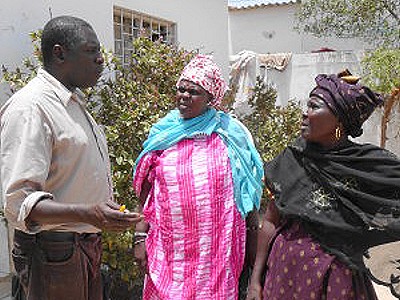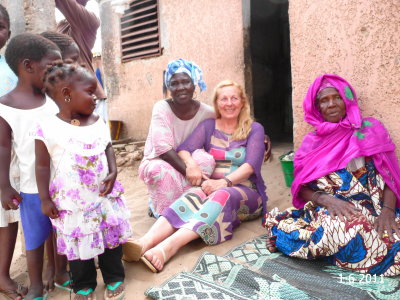Modernisation tends to squeeze out women fish traders

Fatou and Sela as fishmongers: a sense and an importance to be understood in an area under the influence of modernisation:"If our living conditions do not change, in perhaps 10 or 15 years our traditional artisanal fishing village will no longer exist!"
The significance of continued engagement in the fish trade of Fatou and Sela needs to be explained for those who are not aware of the profound changes the artisanal fishery has undergone in recent years. Traditionally, fishing is organised in a family and for this reason, the canoes have always been family-style.
But as a result of the high rents in the fishery, more and more people from outside the fishing communities have invested in the sector. That's why we have several people who have amassed profits in various sectors and have invested in the fishery by becoming owners of fishing units. Those people who invest can be individuals or export-oriented factories as is the case in Hann.
The increasing importance taken by these new investors from outside the fishing communities has profoundly affected the internal workings of these communities. Indeed, the modernisation of the artisanal fisheries sector was carried out with significant social costs.
 The goal here is not to propose a thorough analysis of the impacts, but we may mention one of the most visible consequences: that "the modernisation taking place with more investments does not allow women to have the same roles as before and that they gradually lose the benefit of wholesalers men. Many women fish traders have become micro-fishmongers."
The goal here is not to propose a thorough analysis of the impacts, but we may mention one of the most visible consequences: that "the modernisation taking place with more investments does not allow women to have the same roles as before and that they gradually lose the benefit of wholesalers men. Many women fish traders have become micro-fishmongers."
It is in this context that we appreciate the role and the unique place occupied by people as Fatou and Sela, who are among the few women who continue to maintain their role as "family fishmongers".
These two women are from among the two oldest fishing families in Hann. Family fishing units in their care are purse seines, whose acquisition requires a significant capital.
Faced with the difficulties of access to formal credit in order to maintain family ownership, these two families develop various strategies in the circuit and family support networks they are associated with: participation in several tontines, diversification of activities through engaging in small commerce, etc.









